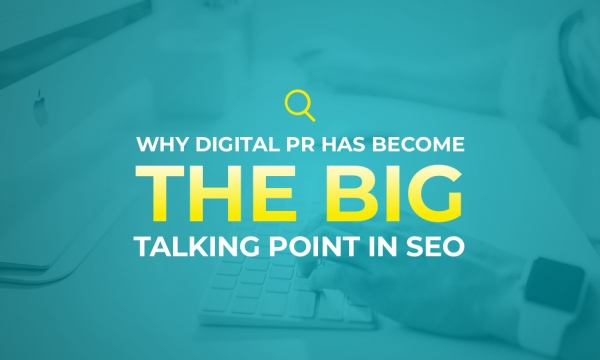Just how do you find that crucial angle to cut through the noise and get your story heard? In the crowded media market, it needs smarter thinking to ensure that your outreach campaign is a success.
Outreach is at the heart of digital public relations; after all, it’s how we achieve coverage mentions and links across the web. It’s perhaps the most difficult element to nail. With newsroom budget cuts, the rise of freelancers and an ever-evolving media landscape – the earned communications industry needs to become more adaptive, educated and robust with the stories we want to tell. To do this, it’s important to look at journalism more holistically to understand its role for modern audiences. Outreach angles, tactics and strategies can then be established, tweaked and tailored to follow in-step with the readers they wish to reach, and of course the writers and influencers who deliver content to them. With that in mind, here are some core considerations for each step of the outreach process.
Work out what you’re trying to achieve

This includes everything from confirming your core media titles, to identifying the key contacts and establishing your ideal campaign outcomes. Yes, coverage is the ultimate objective, but what kind of coverage are you anticipating? Are you wanting journalists to share a news piece, or maybe cover a new creative tool? Perhaps the goal is for your brand to share expertise through thought leadership content.
One way of clarifying this purpose is to outline some KPIs. Rather than seeing these as a box-checking exercise, use these as a means to define what you want to achieve and how to achieve them. The more specific these are, the better the results will be. For example, achieve 12 pieces of coverage for the new spring campaign isn’t telling us much. Achieve 12 pieces of coverage on websites with domain authorities of 55+, with, 50% of coverage achieving above the fold brand mentions, is a lot more specific and helpful for creating outreach material and understanding which sites to target. Defining a purpose makes it easier to create effective strategies, ensures all team members are 100% clear on what’s happening and helps you evaluate a project’s success.
Consider what’s in it for writers
Once you’ve defined your objectives, it’s absolutely essential to understand who you’ll be targeting. Whether it’s an online magazine, national newspaper, YouTube vlogger or an industrial trade publication, you need to understand what the writer or influencer is interested in covering before approaching them.
You should ideally nail this prior to any PR collateral or outreach materials being created. The reason? If you understand exactly what content the influencer wants – and what their audience in turn is interested in – you will significantly improve chances of coverage in the right places.
Writers, influencers and journalists may receive hundreds of PR pitches every day. Investing more time early on to understand and investigate what’s most likely to be of interest will only help hit those core objectives – and in a time efficient manner.
What to consider when coming up with outreach angles

Once you’ve finalised your overarching objectives, you can begin to work on the communication approach. The angles you choose to promote the project should be tailored around the news hook. This ensures that, in addition to being relevant to your overall aims, it’s appealing and relatable to influencers.
Below are some key considerations for developing time-effective and versatile angles.
Slice up the story.

Particularly with data-heavy campaigns, huge amounts of information can be confusing for PRs and journalists alike. The more data present in a release, the more likely the message will be watered down or lost. Where this is the case, consider creating numerous stories from the same data set. For example, look at drafting releases that focus on different data themes such as regional or gender disparities. Slicing up a story allows you to target a range of media (such as regional papers and lifestyle magazines) who would rather run a specialist story than a general one.
Know your news sources

As much as PRs will plan ahead to create a selection of sell-in approaches, we always need to be responsive to the news. This doesn’t just mean religiously following the nationals. Keeping tabs on #JournoRequests can mean the perfect journalist for your client may be right in front of you. Likewise, simple methods such as creating Google Alerts for key themes, and subscribing to newsletters from core influencers and titles will ensure you stay totally up to date.
Your media activity doesn’t have to be purely reactive, though. Building an extensive calendar of national days, events and awareness weeks to anticipate the wider media agenda can help maximise your opportunities.
Level up your story

Once a campaign has been researched, created and signed off, it’s final – right? Not always. Even an established idea could benefit from supporting information that builds a strong, more robust story. Using third party data sources – especially those from government bodies – can add an additional layer of support for press releases. This may occur earlier in the outreach process or after outreach has already started as a means of refreshing your content with information from highly authoritative news sources.
Add expert insight
Additional commentary from an impartial expert can provide a neutral perspective. This can be a major asset in in niche sectors (such as handmade crafts, or scientific technology) where a detailed comment or analysis from skilled people can provide unique insight to readers. However, brand experts – or your brand partners – can also be excellent sources of insight too. The key thing is to keep it relevant, and work with the most knowledgeable people to build on the validity of your campaign.
Case studies, case studies, case studies

In short, a case study sums up research or recounts from either people or situations. This could be anything from a developer’s account on challenges of building a new mobile site, or the experiences of a family buying a holiday home abroad. Whatever form they’re in, case studies can bring a personal perspective, making them effective assets to campaigns. This is particularly true for consumer stories – and even more so for survey-led ideas – as they add a human face and real-life experience to news-generation campaigns. It also helps in distinguishing your survey story from the hundreds of others that are promoted on an almost daily basis.
Track progress

If a number of people are working on the same project, actions will get lost or muddled if they’re not properly recorded. One simple way of tracking this is to ensure media list notes are updated with more detail. Just adding the initials of the team member working on the project, the date last contact was made and details of the angle or approach used will make life easier for everyone.
By investing just a few seconds in covering this off, the team will know exactly which approaches have been tried and tested and – most importantly – which approaches have yielded the best results.
Re-evaluate

Despite everyone’s best efforts, a project might not be getting the anticipated cut through. This could be because a breaking international news story is dominating the media agenda, or if a competitor brand has just launched a similar story. When this happens, reconsider your approach. For example, it might be that you stop using a release, or forget the whitepaper and just focus on sharing one hero point that could really resonate with a relevant journalist.
From there you may want to offer a selection of feature titles that are more closely connected to what the journalist is looking for. Securing the best possible coverage requires flexibility, and sometimes that means chucking out the press release.
There are so many elements to outreach that there’s no one-size-fits all answer. Clarifying your objectives, the media sector and being ready to change tact will help ensure you’re driving a stream of fresh and timely ideas. Considering the broader outreach approach will help you effectively steer the type of coverage you hoping to achieve, leading to more brand awareness and authority in key titles that matter to your business.


